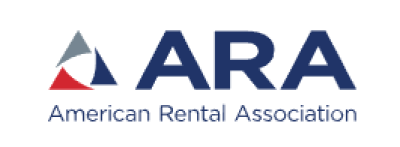The U.S. construction and general tool rental industry plays a crucial role in supporting contractors, developers, and equipment rental company owners. Our rental industry forecast for 2025 sees the potential for continued growth amidst some economic uncertainty. As the industry continues to evolve, rental businesses must stay informed about emerging trends, economic conditions, and market demands.
“Economic uncertainty and relatively high financing costs, underscored by a recent Fed decision, weigh on the outlook for investment,” says Scott Hazelton, managing director at S&P Global. “However, this is little risk of a serious downturn, and equipment rental can gain penetration in uncertain times. Our equipment rental outlook for 2025 has been lowered from our view last quarter, however, we still project equipment rental growth at about twice the rate of real GDP and inflation.”
With an optimistic outlook for 2025, rental companies can expect steady growth driven by increased construction activities, shifting preferences for renting over purchasing, and advancements in equipment technology. In this article, we’ll break down key industry insights, forecasted growth, and strategies for stakeholders looking to capitalize on upcoming opportunities.
Industry Performance in 2024
The U.S. construction and tool rental industry reached $83.3 billion in 2024, marking an 8% growth from the previous year.
Key factors driving this growth included:
- Increased demand for construction projects, especially in residential and commercial sectors.
- A rising trend of renting over purchasing, driven by cost-effectiveness and flexibility.
- Post-pandemic economic recovery fueling infrastructure development.
As 2024 demonstrated strong industry performance, the 2025 rental industry forecast projects this momentum to continue.
Projected Growth for 2025
The American Rental Association (ARA) forecasts a 5.2% growth in 2025, bringing the industry’s value to $87.5 billion.
Factors contributing to this growth include:
- Sustained demand in residential and commercial construction.
- A preference for rental equipment over ownership due to cost savings.
- Increasing adoption of advanced, fuel-efficient, and eco-friendly machinery.
For rental companies, this projected growth presents a strong incentive to expand their equipment fleets and improve service offerings.
Opportunities for Equipment Rental Companies
Industry experts predict a 5.7% revenue increase in 2025 for rental companies, according to International Rental News. “Oxford Economics economists forecast that US fiscal expansion in the form of tax cuts, interest rate cuts, and higher federal spending in areas like defense would likely support privately funded construction activity in the near term.”
Key growth opportunities include:
- Residential construction: Demand for rental equipment in housing developments remains strong.
- Infrastructure projects: Government-funded projects require specialized machinery.
- Technological innovations: Modern rental equipment with smart technology and automation enhances efficiency.
Rental businesses should consider investing in:
- Expanding their fleet to meet increasing demand.
- Employee training to enhance operational efficiency.
- Marketing and customer engagement strategies to attract new clients.
Impact on Heavy Machinery Sales
The continued expansion of the rental industry is expected to drive higher sales of heavy machinery to rental company owners. As demand for rentals grows, manufacturers should prepare by:
- Scaling up production to meet fleet expansion needs.
- Developing fuel-efficient and electric models to align with sustainability trends.
- Partnering with rental companies to tailor products to market needs.
Rental Industry Outlooks Shaping 2025
Several trends will influence the U.S. construction and rental industry:
- Eco-friendly equipment: Increasing demand for low-emission and electric machinery.
- Integration of IoT and telematics: Smart monitoring systems improving fleet management.
- Automation and AI: Enhancing operational efficiency and predictive maintenance.
Challenges and Considerations
While 2025 presents significant opportunities, businesses should prepare for potential challenges:
- Market saturation: Increased competition may put pressure on rental pricing.
- Economic fluctuations: Interest rate changes and inflation could impact construction investments.
- Regulatory changes: New environmental and safety regulations may affect equipment requirements.
Looking beyond 2025, growth rates are expected to slow to 4.1% in 2026 and 4% in 2027, reinforcing the need for strategic planning. (For Construction Pros)
Recommendations for Stakeholders
Contractors:
- Leverage rental equipment to save on ownership costs.
- Utilize the latest technology to improve project efficiency.
Equipment Rental Companies:
- Expand inventory to cater to the growing market.
- Invest in employee training and digital marketing strategies.
Manufacturers:
- Prepare for increased demand by scaling production.
- Innovate product lines to incorporate fuel efficiency and automation.
Wrap Up
The U.S. construction and tool rental industry is poised for strong growth in 2025. With a projected $87.5 billion valuation, rental companies, contractors, and manufacturers have significant opportunities to expand, innovate, and thrive. Stay ahead in the industry by keeping up with market trends and investing in the right equipment. Explore the best rental options and machinery solutions today!






